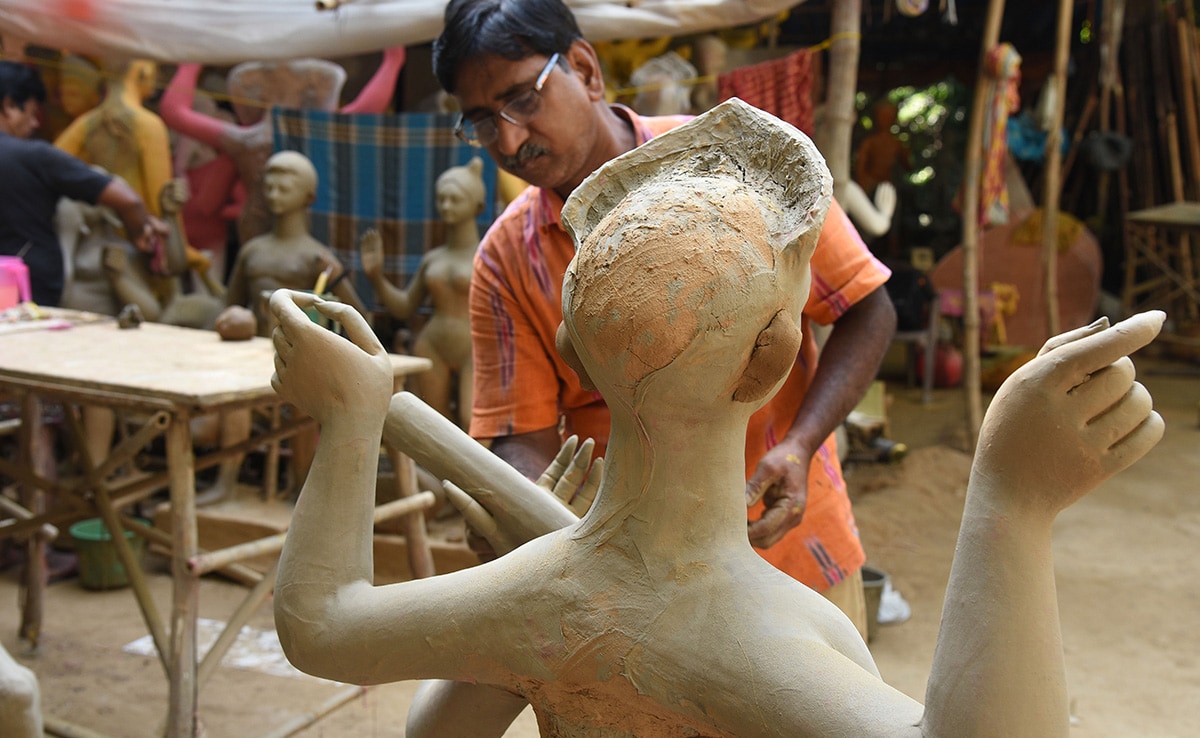
Preparations for the ten-day festival begins months in advance.
New Delhi:
A group of twenty artists have camped in New Delhi’s Chittaranjan Park and are busy creating idols of Goddess Durga. The idols, made with clay, will be immersed in the river Yamuna on the tenth day of the festival celebrated as victory of good over evil as Goddess Durga killed the demon King Mahishasur. According to Hindu mythology, it is believed that the goddess visits the Earth during this time to bless her devotees.

An artist making eyes of the goddess. The heads of the idols are sculpted separately because of the intricate features incorporated in them as a part of the goddesses.
Preparations for the ten-day festival begins months in advance. Funds are collected with corporate sponsorships and donations to help build pandals around contemporary themes and engage priests and artisans.

A painter applies water based spray paint covering the body of the idol.

An artist gives expression to a demon face made of clay.

An artist gently smothens the surface of the goddess face made of clay before applying paint.
Durga Puja, is celebrated from 6 days in some parts of the country, to 10 days in others. In most of Northern India, the festival is celebrated as Navratri (nine nights). Regardless of these variations, the last four days of Maha Saptami, Maha Ashtami, Maha Navami and Vijay Dashami, are particularly important and accordingly celebrated with much splendor around the country.

Fierce lion holding the arm of the Demon Mahishasura in the war of Good over Evil.

Eco-friendly idols are adorned with jewellary also made of clay which is finally painted.

In a modern depiction, Goddess Laxmi is seen sitting on a couch all made of clay.
The goddess, known to Hindus as the ‘destroyer of evil’, is characterised by her ten arms in which she carries various weapons while sitting on a lion. Also known as Bhavani, Amba, Chandika, Gauri, Parvati, Mahishasuramardini, Durga is the ‘Mother goddess’ and the ‘Protector of the Righteous’ to Hindu devotees.

Artist mixing colour to be applied on the images. The color is further strained to ensure its smoothness.
In most parts of the country, the festival commemorates the victory of the goddess over a demon called Mahishasura. As told by Hindu mythology, the demon was set out to wage war against the gods and it was up to Goddess Durga to slay him and protect earth. She began her battle against the demon on the seventh day of Navratri, known as Maha Saptami and slayed him by the final day of Vijay Dashami.

Clothing of the goddess is also decorated with clay motifs.
The festival is celebrated with song and dance, fasting followed by feasts, elaborate decorations and pujas or grand ceremonies at temples and religious recitals. In some parts of the country young girls dress up as the goddess and participate in various rituals at temples and homes.




